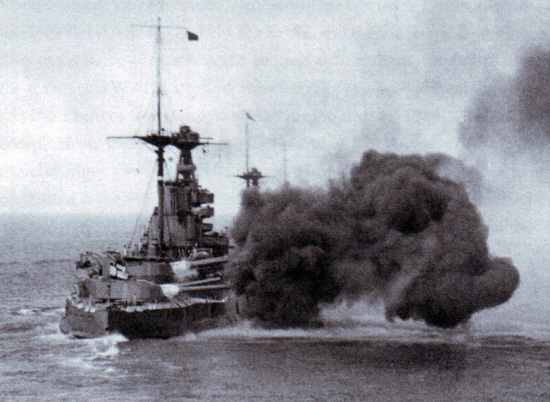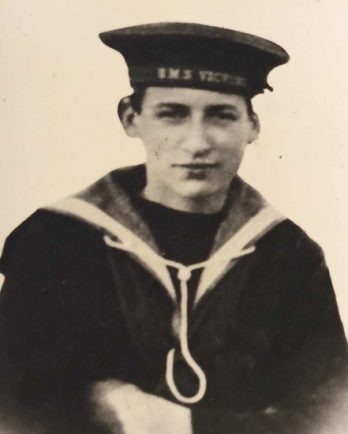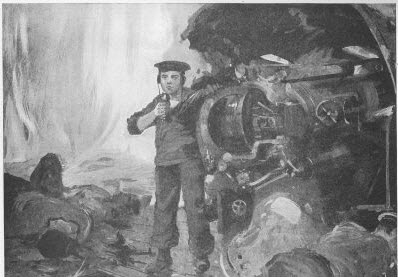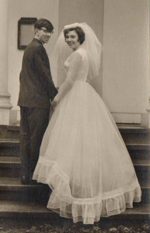THE STORY of the youngest person commemorated on Leamington’s War Memorial has been told for the first time.
Military historian David Eason has spent the past couple of years piecing together the story of Henry Gordon Farmer who was killed aged just 15 while serving with the Royal Navy during the Battle of Jutland – the largest naval battle of the First World War.
Henry was born in Willes Road in 1899, the fifth eldest of seven children born to George and Jane Farmer.
After leaving school in 1914, Henry was employed as a core-maker at the Coventry Ordnance Works – where ironically at the time they were making guns for HMS Malaya, the ship on which Henry was serving when killed.
In June 1915, Henry enlisted at Coventry into the Royal Navy as a Boy 2nd Class, aged 14, and began training in Plymouth on board the Royal Navy training ship HMS Impregnable. Henry was raised to Boy 1st Class in November 1915.
He completed his training the following month, and was posted to HMS Victory Royal Naval Barracks in Portsmouth, where after a couple of months, he was posted to HMS Malaya.
The battlecruiser was part of the fleet sent to defend allied shipping and the British blockade Skagerrak – a waterway located between Norway and northern Denmark, off the Jutland Peninsula – against a planned German attack.
The Scottish-based ships raised anchor and moved under the Forth Bridge into the North Sea at 8pm on the night of Tuesday May 30.
Suddenly at 3.30pm the following day, the bugles sounded for action on the Malaya – a German destroyer had been sighted.
Then shells began to fall and HMS Indefatigable disappeared in a huge fireball after she had been hit several times – killing all but two of her 1,019 crew.
The two sides engaged and the Malaya was hit a couple of times but escaped any major damage – but her luck was soon to run out.
At 5.20pm she received the first of three serious hits within ten minutes – the later killing all the gun crew and igniting the cordite that had been placed on trolleys to the rear of the guns.
Sub-Lieutenant Clifford Caslow-Malaya later wrote: “My gun control tower was filled with fumes and blue smoke, and we were knocked backwards.
“I put my face to the battery voice-pipe to enquire for them (the gun crew), but there was no need to ask. I could hear the most terrible pandemonium, and the groans and cries of wounded men, I heard one man call out, water, we’re burning.”
Henry served as a range-finder – aiming the guns – and is believed to have been among those killed when the third shell struck.
The aftermath of the fire as casualties and corpses were brought out was stomach-churning.
Wireless telegraphist Frederick Arnold-Malaya remembered: “Some of the dead were so burned and mutilated as to be unidentifiable.
“The living badly burned cases were almost encased in wrappings of cotton wool and bandages with just slits for their eyes to see through, in fact, the few walking cases’ who could wander about the after deck presented a grim, weird and ghoulish sight.”
Surgeon Lieutenant Duncan Lorimer had fought hard to save the lives of those wounded until he physically collapsed.
He recalled: “The ship had slowed down and there was a burial going of the poor unrecognisable scraps of humanity from the explosion. I had been asked previously to try and identify ‘Young’ and ‘Cotton’, but it was impossible.
“It was a gloomy scene, the grey sky, the grey sea, the stitched up hammocks, the padre with his gown blowing in the breeze. The ‘Last Post’ was sounded by the Marine buglers and our shipmates plunged into the sullen waters.”
The Malaya returned to Scotland under her own steam badly damaged.
Sixty-five men on board had been killed. Henry was recorded as having been buried at sea.
In 2014, Henry’s name was finally included on the Leamington War Memorial in Euston Place, alongside that of his brother Albert.
Both sides claimed victory in the Battle of Jutland. Fourteen British and 11 German ships were sunk, with many lives lost.
The British lost more ships and twice as many sailors, and the British press criticised the failure to force a decisive outcome, but the German’s plan of destroying a substantial portion of the British fleet also failed.
At the end of the year, the Germans had failed to reduce the Royal Navy’s numerical advantage and switched resources to submarine warfare – targeting Allied and neutral shipping which by April 1917 led the USA to declare war on Germany.















